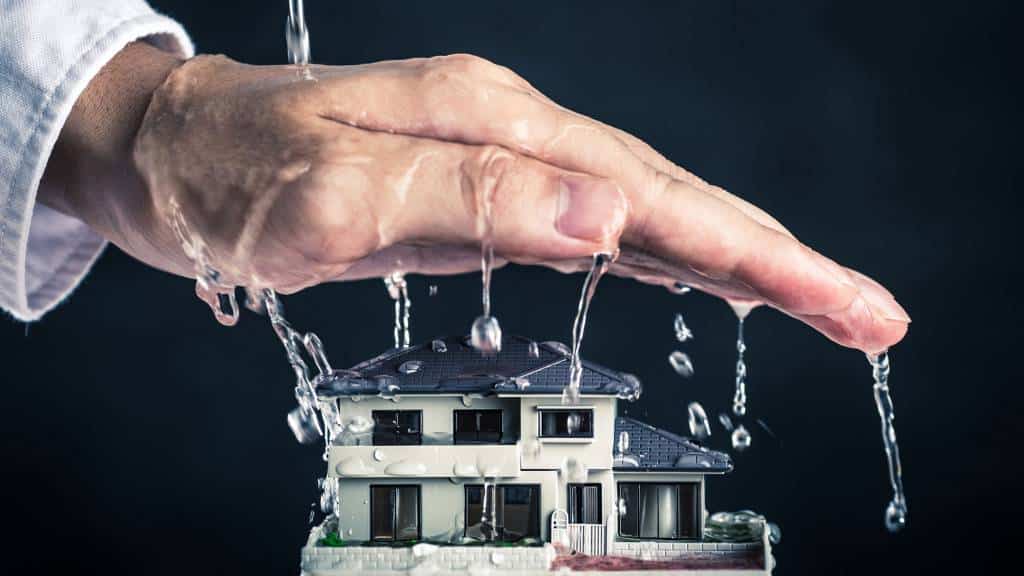Pinpoint The Factors Causing Water Seepage in Your Residence
Pinpoint The Factors Causing Water Seepage in Your Residence
Blog Article
The content in the next paragraphs about How Fast Water Damage Can Ruin Your Home is rather stimulating. Check it out for yourself and see what you think of it.

Leaks not just cause waste of water but can additionally cause unneeded damages to your home and promote undesirable natural growth. By comprehending as well as looking for everyday situations that trigger leakages, you can safeguard your residence from future leakages as well as unneeded damages.
Intruding origins
The majority of water leakages begin outside your house rather than inside it. If you notice a sudden decline in water pressure, claim in your faucet, take some time to go out as well as analyze your yard. You may see wet patches or sinkholes in your yard, and that may mean that tree origins are getting into water lines triggering water to permeate out. You can have your plumber look for intrusion, specifically if you have trees or bushes near your building.
Rusty water systems
As time goes by, your plumbing system ages as well as rust such as rust may begin gnawing the pipelines. This may be the source of staining or bending on your pipes. This calls for an examination with your plumber immediately. Think about changing the pipelines considering that they are at a greater danger of rust than the newer designs if our plumbing system is old.
Malfunctioning Pipe Joints
Pipeline joints can degrade over time, resulting in water leakages. If you have loud pipelines that make ticking or banging noises, specifically when the hot water is turned on, your pipe joints are possibly under a lot of stress.
Immediate temperature modifications.
Extreme temperature level modifications in our pipelines can create them to broaden and also contract all of a sudden. This expansion as well as contraction may create cracks in the pipes, specifically if the temperature are below freezing. It would be best if you kept an eye on exactly how your plumbing works. The visibility of the formerly stated situations regularly indicates a high risk.
Poor Water Connectors
At times, a leak can be caused by loose hose pipes and also pipelines that supply your appliances. In instance of a water connections leak, you might observe water running straight from the supply line or puddles around your devices.
Blocked Drains
Blocked drains may be frustrating and also inconveniencing, yet they can often wind up creating an overflow causing rupture pipelines. Keep eliminating any type of products that may decrease your drains that might clog them to prevent such hassles.
All the above are causes of leaks but not all water leaks arise from plumbing leaks; some leaks might originate from roofing leakages. All leaks should be fixed right away to avoid water damage.
Leaks not just create waste of water but can additionally cause unnecessary damages to your house and advertise undesirable organic development. By understanding and also looking for everyday situations that create leakages, you can shield your residence from future leaks as well as unneeded damage. Today, we will look at 6 leakage creates that may be causing your pipelines to drip.
At times, a leak can be caused by loosened pipes and also pipes that supply your devices. In instance of a water links leak, you might observe water running directly from the supply line or pools around your home appliances.
How To Check For Water Leak In Your Home
How To Check for Leaks
The average household's leaks can account for nearly 10,000 gallons of water wasted every year and ten percent of homes have leaks that waste 90 gallons or more per day. Common types of leaks found in the home are worn toilet flappers, dripping faucets, and other leaking valves. These types of leaks are often easy to fix, requiring only a few tools and hardware that can pay for themselves in water savings. Fixing easily corrected household water leaks can save homeowners about 10 percent on their water bills.
To check for leaks in your home, you first need to determine whether you're wasting water and then identify the source of the leak. Here are some tips for finding leaks:
Take a look at your water usage during a colder month, such as January or February. If a family of four exceeds 12,000 gallons per month, there are serious leaks.
Check your water meter before and after a two-hour period when no water is being used. If the meter changes at all, you probably have a leak.
Identify toilet leaks by placing a drop of food coloring in the toilet tank. If any color shows up in the bowl after 10 minutes, you have a leak. (Be sure to flush immediately after the experiment to avoid staining the tank.)
Examine faucet gaskets and pipe fittings for any water on the outside of the pipe to check for surface leaks.
Undetected water leaks can happen without the home or business owner even realizing. If you suspect a water leak, but not able to find the source. It is time to contact a professional water leak detection service, The Leak Doctor.
How To Find a Water Leak In Your Home
https://www.leakdoctor.com/blog/How-To-Check-For-Water-Leak-In-Your-Home_AE197.html

Hopefully you enjoyed reading our part on How to detect water leaks in your home. Thank you so much for taking a few minutes to read our posting. Sharing is nice. Helping people is fun. Thanks for your time invested reading it.
Quote Report this page